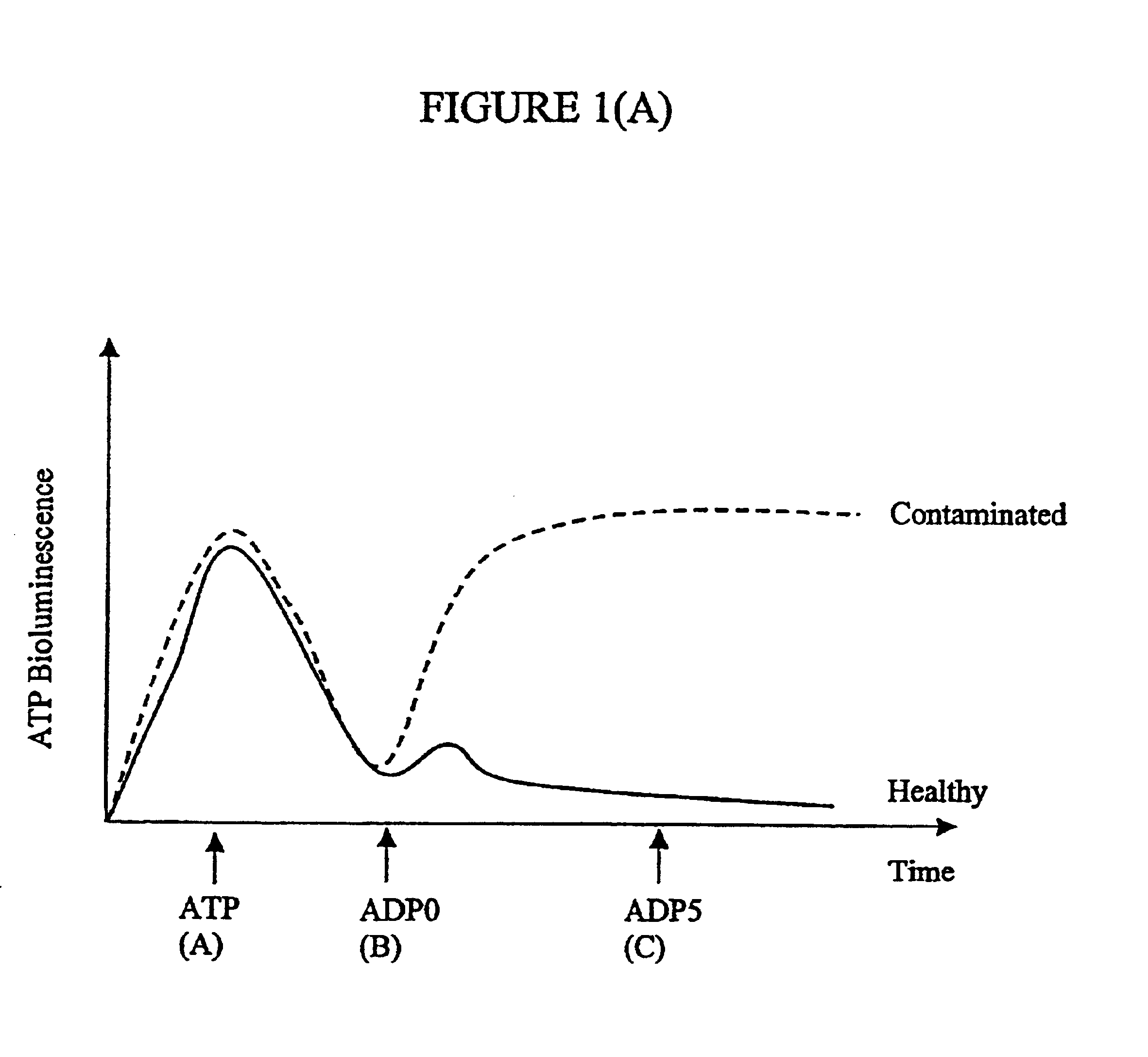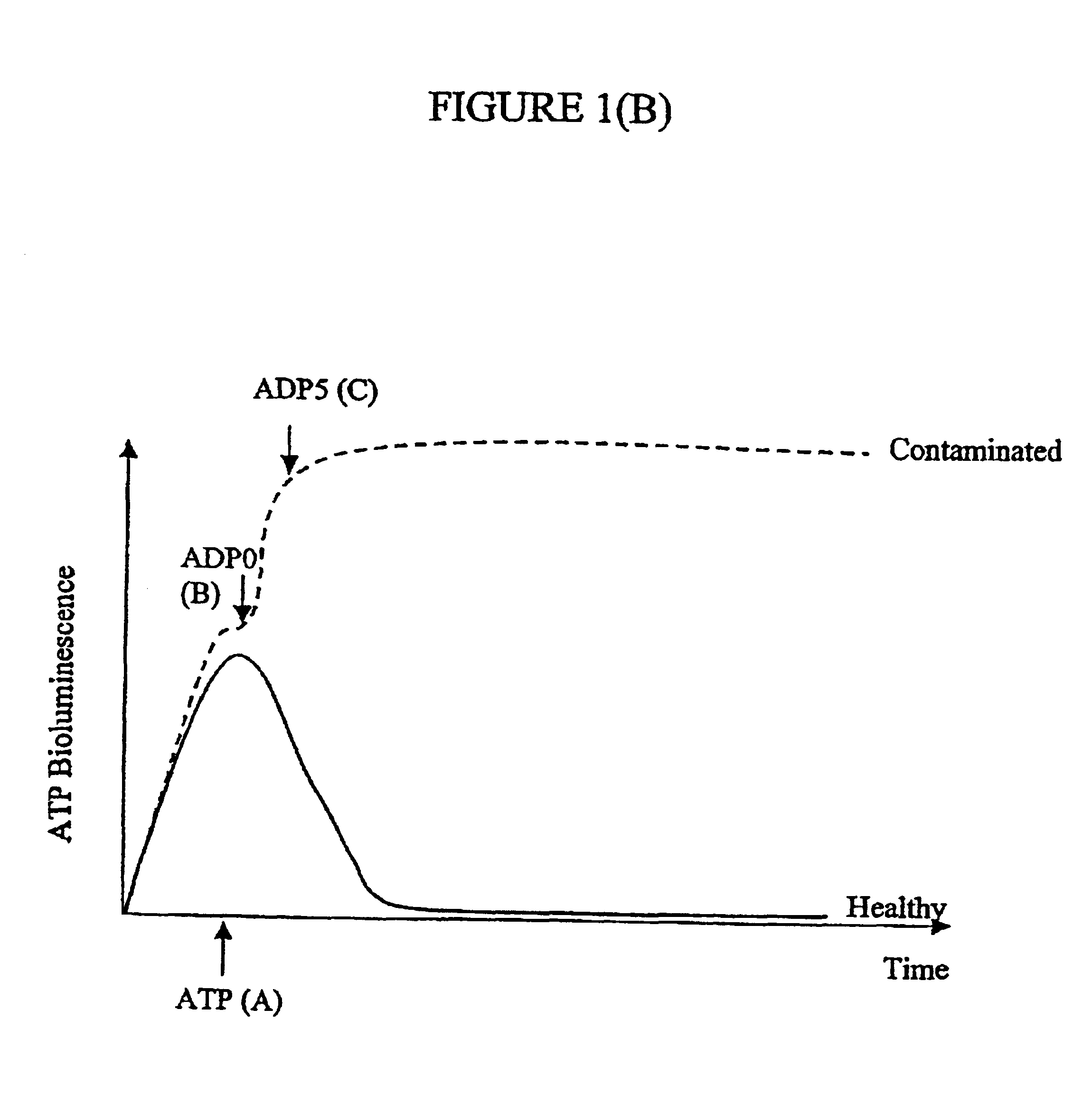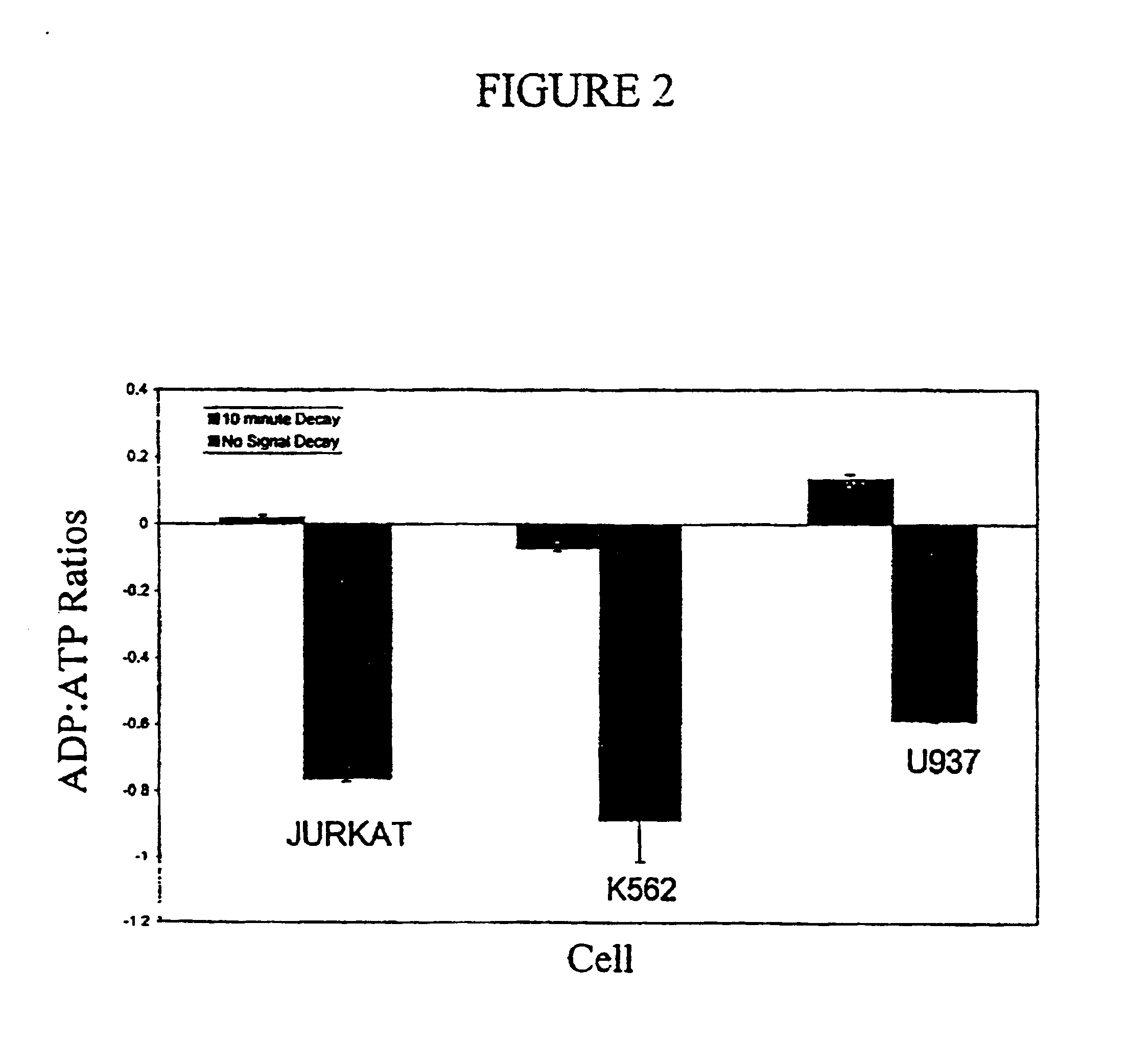Assay of micro-organisms in cell cultures
a cell culture and microorganism technology, applied in the field of assay of microorganisms, can solve the problems of low level of microorganisms being accidentally introduced into cultures during routine feeding, invalidity and significance of research and the safety of biologicals produced from contaminated cell cultures,
- Summary
- Abstract
- Description
- Claims
- Application Information
AI Technical Summary
Benefits of technology
Problems solved by technology
Method used
Image
Examples
example 1
Reagents
Bioluminescent (Luciferin / Luciferase) Reagent
[0057]This was supplied by Labsystems, Helsinki, Finland as a freeze dried powder to be reconstituted prior to use. The powder contains luciferase from Photinus pyralis (40 μg), Luciferin (42 μg: believed to contain 96% D-Luciferin; 4% L-Luciferin), bovine serum albumin (50 mg), magnesium sulphate (1.23 mg) and Inorganic pyrophosphate (0.446 μg). It was reconstituted to 10 ml of 0.1 M Tris-acetate buffer, pH 7.75 containing 2 mM EDTA (dipotassium salt).
ATP-releasing Agent
[0058]0.1 M Tris acetate buffer pH 7.35 containing 2 mM EDTA (dipotassum salt), 0.25% v / v Triton X-100 and 1 μM dithiothreitol.
ADP-converting Agent
[0059]This was prepared by mixing equal volumes of 2 M potassium acetate, 500 units / ml pyruvate kinase (PK) and 100 mM phosphoenol pyruvate (PEP). An equal volume of Tris-acetate buffer pH 7.75 was then added. The PK and PEP were thus diluted 1:6 when the converting reagent was made up from the stock solutions. Since 20...
example 2
[0076]The procedure of Example I was followed.
[0077]The cell lines tested were U937, Jurkat, HL60, K562, CEM-7, L-929 and A549 (as in Example 1) plus:[0078]L-929 (freshly thawed) and[0079]BCP-1 (lymphoma cell line)
[0080]The DAPI stained cytospins were viewed under fluorescence microscopy, and all cell lines appeared positive. The PCR test showed that all cell lines except Jurkat were positive for M. fermentans. The Jurkat cells tested were positive for M. hyorhinis. The ADP / ATP ratios appeared to increase at a very early stage of infection.
[0081]The L-929 cells held as frozen stock seemed to be the source of the infection, as they were positive in the PCR assay before they had even been set up in culture. On thawing of these cells and culturing them for 48 hours, there was already an increase in the ADP:ATP ratio from around 0.1:1, normally observed in a healthy cell population, to 0.37:1 (average of 2 experiments).
[0082]The cells were regularly passaged by trypsinisation during a f...
example 3
[0083]This Example demonstrates the effect of heat-treating the culture supernatants at 56° C. for 30 minutes. This would normally inactivate any ATPase activity present as a result of lysing the cells with the nucleotide releasing agent. The cells were incubated at 1×105 ml−1 and ATP was measured immediately after removal from the water bath (controls were left at room temperature for 30 minutes) and 10 minutes later. It can be seen that the heat treatment reduced the light signal decay, by inactivating cellular ATPases and other degradative enzymes. ADP would have accumulated in the culture due to the presence of mycoplasma, and, as the ADP is beat stable, it was still detectable.
[0084]
TABLE 2ATPATP afterCell Typeinitially10 minutesADPRatioL-929-56° C.-RT26122189161555.3472693 348 96033.437U937-56° C.-RT56194378323204.98652441406 92131.466Jurkat-56° C.-RT94297242455894.06794441265118601.112K-562-56° C.-RT71866673343733.85565121578107951.415Cem-7-56° C.-RT72835752371724.31474541106...
PUM
| Property | Measurement | Unit |
|---|---|---|
| diameter | aaaaa | aaaaa |
| size | aaaaa | aaaaa |
| pH | aaaaa | aaaaa |
Abstract
Description
Claims
Application Information
 Login to View More
Login to View More - R&D
- Intellectual Property
- Life Sciences
- Materials
- Tech Scout
- Unparalleled Data Quality
- Higher Quality Content
- 60% Fewer Hallucinations
Browse by: Latest US Patents, China's latest patents, Technical Efficacy Thesaurus, Application Domain, Technology Topic, Popular Technical Reports.
© 2025 PatSnap. All rights reserved.Legal|Privacy policy|Modern Slavery Act Transparency Statement|Sitemap|About US| Contact US: help@patsnap.com



